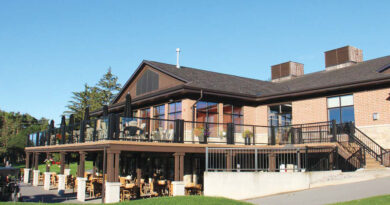Prepping For Next Winter
For most people, spring is for anticipating another summer of fun. But it’s also when those with winter equipment like snowblowers “summerize” it. Same goes for sleds and trailers owned by thousands of snowmobilers throughout the Kawarthas, Bancroft & Haliburton regions. Many call their dealer. Handy folks do it themselves. But some don’t do it at all, much to their later regret.
Why bother summerizing you might ask? One reason is to avoid premature deterioration resulting in unnecessary repairs or breakdowns. Another is to prolong functional lifespan as long as possible. And finally, to store it properly for next winter. Here’s what snowmobilers need to do.
Sled Summerizing Start by power-washing everything to remove accumulated dirt, grime, crude and grease. This is also an opportunity to deal with new marks on the finish. Next, inspect all visible parts under hood and undercarriage, repairing or replacing anything broken or showing undue wear & tear. Then clean the brake and clutch, change or top up fluids, do a grease and lube, and replace belt and spark plugs as needed.
Your sled’s going to sit unused for months, so use a protective spray to prevent storage damage. Also, add fuel stabilizer to a full fuel tank, running the engine for several minutes to flow stabilized fuel through it. Follow up by spraying your engine with fogging oil to prevent corrosion or gumming up its parts, remove the belt to take pressure off the clutches, and take out the battery (use a trickle charger to prevent power drainage).
Consider blocking exhaust outlet, air intake and other openings with steel wool to keep out nesting varmints – and place a few mothballs under the hood. Finally, release track tension, take weight off suspension with a snowmobile lift or blocks, and put on a storage cover (but never park in direct sun).
Trailer Summerizing Winter towing exposes your trailer to severe driving conditions, including snow, ice, slush and extreme cold. Plus, all kinds of salty, sandy road crud – and new corrosive enemy #1, anti-icing brine.
What’s more, most winter roadways are frost heaved, pot-holed and irregular. They aggravate pre-existing mechanical issues and create new ones. Improper storage for several months only makes matters worse. And while the summerizing process for trailers is much the same as for sleds, here are some key pointers…
After cleaning the entire exterior and interior, do a careful inspection underneath, including axles, springs and the backs of tires and rims. If your trailer has brakes, check and service them. Residual moisture in wheel bearings causes deterioration, so displace it by either pumping in a high-speed, lithium-based grease (matching the existing grease type) or repacking the bearings. At the same time, grease cam bars equipped with grease fittings.
Anti-icing road brine can be especially corrosive to the underside of trailers. That’s why some owners get their trailers professionally undercoated. At the least, apply anti-corrosion product to the entire under frame, especially joints and fittings, where metal components are in constant contact. Meanwhile, if your trailer has torsion axles, it’s smart to check axle bolts. Then inspect for corrosion and replace the gasket between the axle and frame if necessary. Finally, use a lightweight penetrating oil or rust protection lubricant spray on all hinges, locks, pivot points, including ski clamps and D rings. Also, spray items like the tongue, tongue jack, safety chains and coupler – and don’t forget the trailer hitch on your tow vehicle. This is also a good opportunity to check that your trailer lights and electrical system are working properly.
 Once summerized, store your trailer out of the sun in a dry area (inside if available, but avoid damp surfaces like grass which can amplify corrosion). Protect your tires by shielding them against sun rays, but avoid tightly sealed plastic that prevents air circulation. Also, remember to angle the trailer slightly from level so rainwater will run off and not pool.
Once summerized, store your trailer out of the sun in a dry area (inside if available, but avoid damp surfaces like grass which can amplify corrosion). Protect your tires by shielding them against sun rays, but avoid tightly sealed plastic that prevents air circulation. Also, remember to angle the trailer slightly from level so rainwater will run off and not pool.
Take weight off the tires and suspension, especially if you are storing sleds inside. Some owners do this by putting the trailer up on blocks, also a good theft deterrent. Regardless, lock everything securely (remember to lube the locks first).
Get Smart This Spring Now it’s entirely possible that I’ve missed or misstated a few summerizing steps. So my last word is to make your own checklist this spring (also a handy reference for winterizing next fall). And always keep in mind that proper snowmobile, trailer – and snowblower – summerizing is key to their performance and longevity. It’s also the smart way to protect your investment – and to help ensure your peace of mind next winter!
Craig Nicholson, The Intrepid Snowmobiler, is an International Snowmobile Hall of Fame journalist and a long-time Kawarthas cottager who also provides tips and tour info for snowmobilers at intrepidsnowmobiler.com and for PWC riders at intrepidcottager.com
Top Photo: Credit: Craig Nicholson
Middle Photo Credit: Martin Lortz.
Bottom Photo Credit: Al Fletcher




